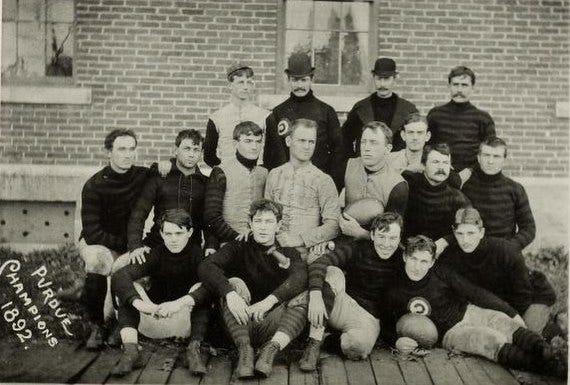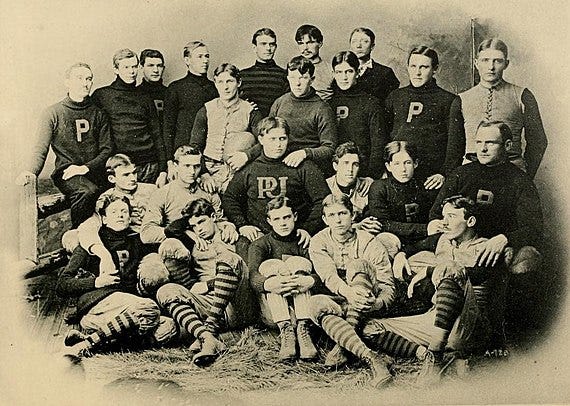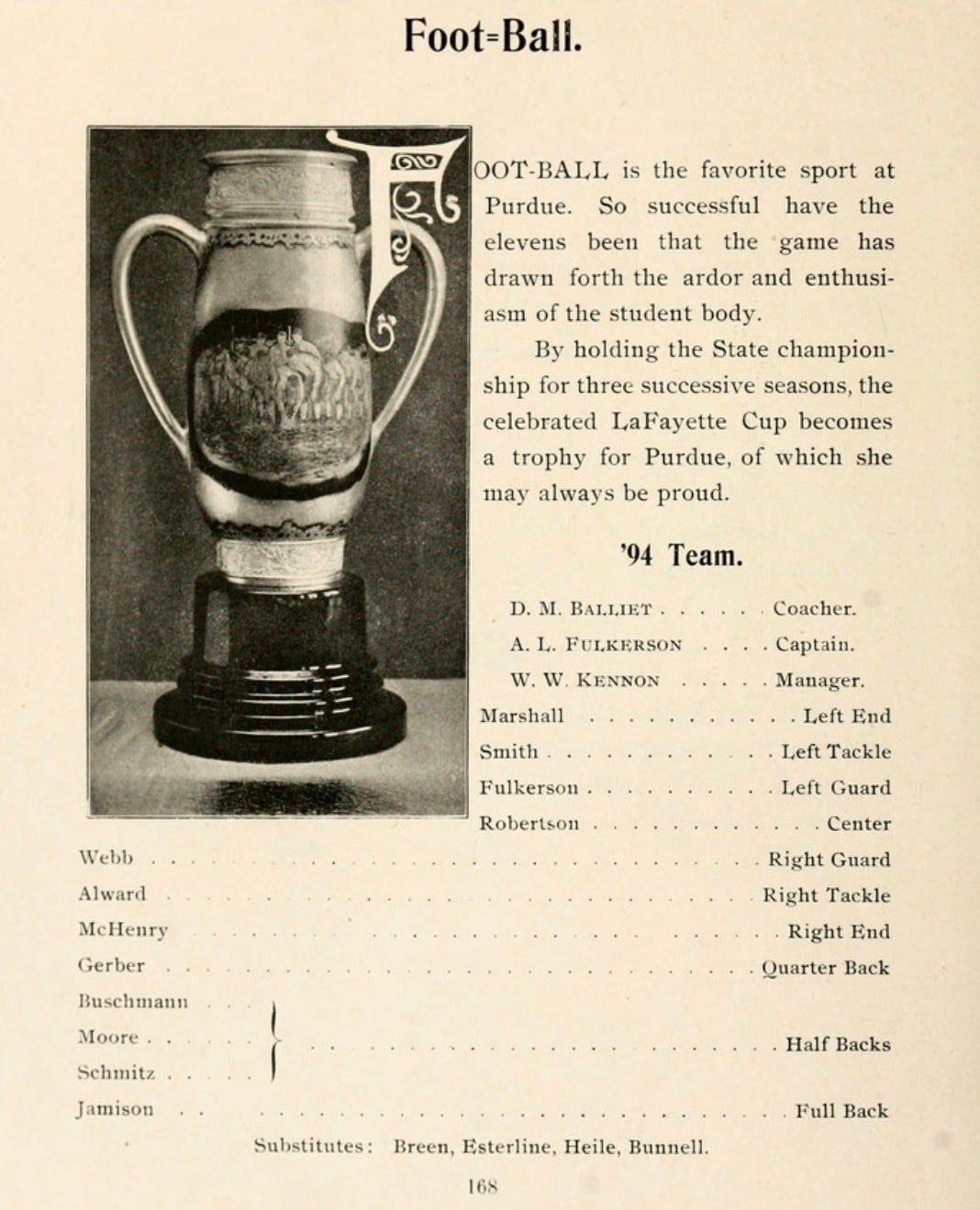Today's Tidbit... Purdue and The Lafayette Cup
College football plays trophy and rivalry games throughout the year, but many of the best of those games occur on Thanksgiving weekend. Teams that did little through the year can gain a measure of salvation by beating their instate or border rival for the Old Oaken Bucket or a similar reward. Yet, teams often battled for mythical state championships before today's one-on-one rivalries and conferences.
One of those state championship battles arrived in Indiana shortly after Butler formed the state's first football team in 1885. Butler's head start helped them dominate the early years of play, but other schools began catching up when they formed the Indiana Intercollegiate Athletic Association in 1890.
Purdue had become competitive by 1892 when 159 good citizens of Lafayette donated $1 apiece to acquire The Lafayette Cup, a 14-inch Moorish-inspired sterling silver cup with a formation of eleven players engraved on the front. Made by Gorham and purchased from Tiffany, they intended the cup to be a traveling trophy awarded to each year's state champion. As part of the process, the winning team was to submit a $200 deposit upon taking possession to ensure the cup continued traveling if and when another team claimed the title.
The contending teams in the first year of play included Butler, DePauw, Indiana, Purdue, and Wabash.
Purdue, which by then had picked up former Princeton player Knowlton Ames as its coacher, ended up 8-0, beating the four Indiana teams and Illinois, Wisconsin, Michigan, and Chicago, so The Lafayette Cup found a temporary home in West Lafayette.
For the 1893 season, they brought in D. M. Balliet as the coacher. While the Boilermakers lost to Wisconsin and Michigan and tied Illinois, they beat Chicago and their in-state rivals, allowing the cup to remain in West Lafayette.
D. M. Balliet returned in 1894 with the opportunity to take permanent possession of The Lafayette Cup. As in the previous two years, Purdue dominated most of the season, losing only to Minnesota, finishing the season with a 9-1 record and 4-0 in instate games, allowing them to take permanent possession of the vaunted cup.
After claiming the Lafayette Cup following the first three years of eligibility, the award seems to have disappeared into the mists of time. It goes virtually unmentioned after 1895. Its failure to appear in more recent times suggests it was lost along the way, perhaps ending up in the private collection or melted down to pick up a few bucks.
Different Lafayette Cups popped up in other sports in other locations and times. Still, as all Boilermakers know, only one Lafayette Cup matters, even if few remember it ever existed.
Football Archaeology is reader-supported. Click here to buy one of my books or otherwise support the site.






